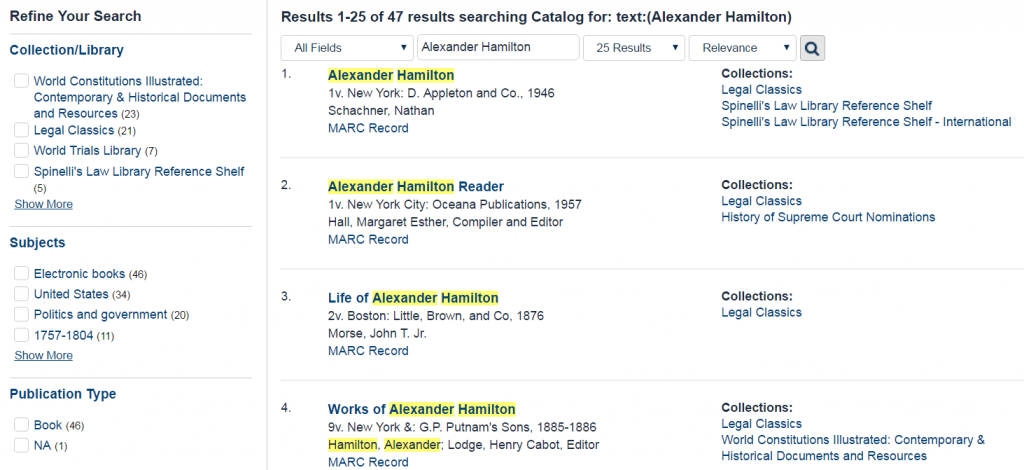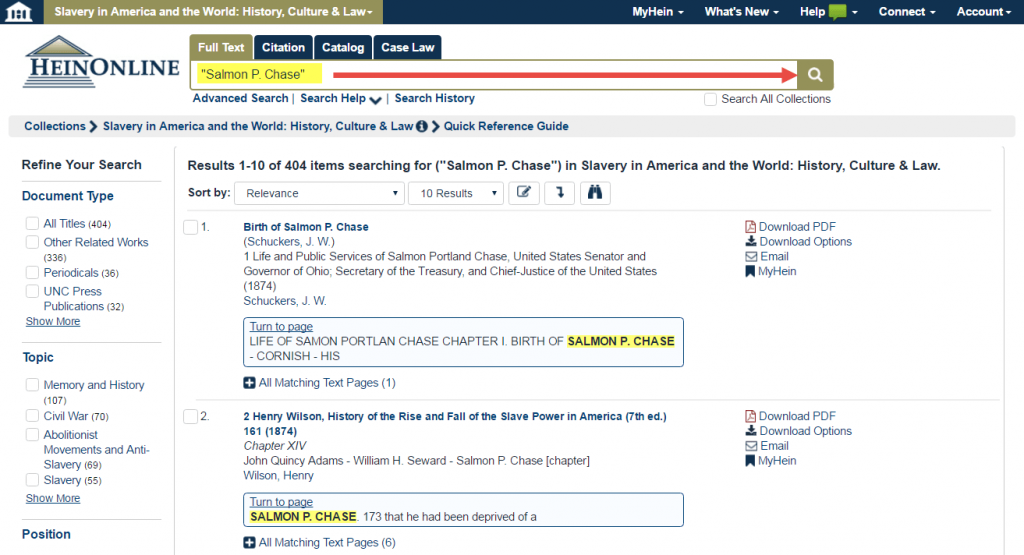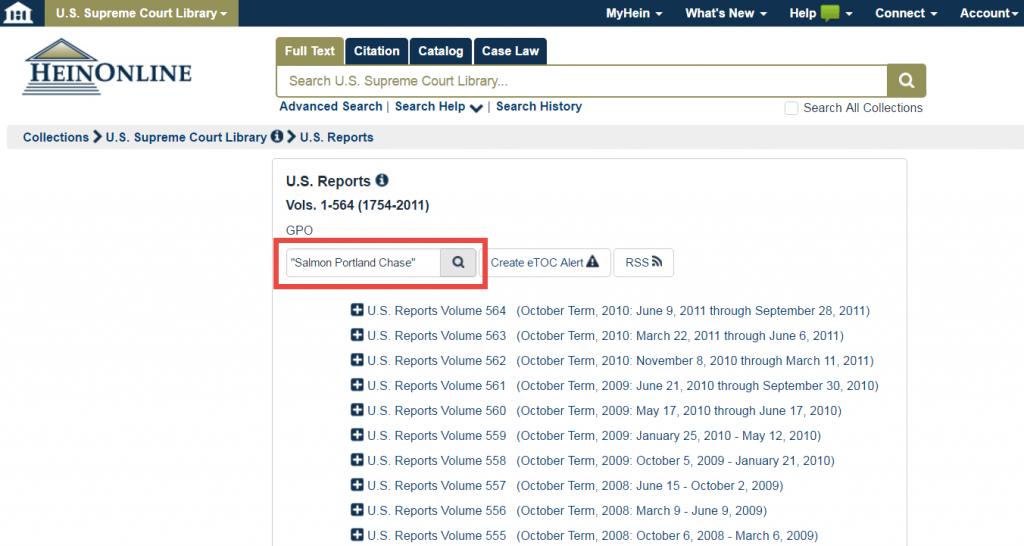Beginning this year, we will be discussing notable figures in legal history and what information can be found on them in HeinOnline. Last week marked the birthdays of Alexander Hamilton and Salmon P. Chase, both of whom greatly influenced the national banking system of the United States.
Alexander Hamilton (January 13, 1808 – May 7, 1873)
Over the past 2 years, much of America has heard of the revolutionary, hip-hop musical new to Broadway, Hamilton. With continued sold out performances on Broadway along with a national tour in 2017, this cultural phenomenon is far from over; even President Obama joined the Hamilton bandwagon.
Let’s not forget that the show is based upon one of our Founding Fathers, the first Secretary of the Treasury, one of the authors of the Federalist Papers, and the man depicted on the American ten-dollar bill: Alexander Hamilton.
Born on January 11th, 1755 in the British West Indies, Hamilton was an illegitimate son born into humble beginnings. Abandoned by his father and orphaned with his mother’s death, he eventually worked his way up from poverty and through his British patrons was able to enroll in college in New York. He then served in the Revolutionary War, eventually becoming George Washington’s assistant and trusted adviser.
Developing into a political prodigy, Hamilton played a key role in the ratification of the United States Constitution and made the largest contribution to one of the most important sources for interpreting and understanding the original intent of the Constitution-The Federalist Papers. As the first United States Secretary of the Treasury, Hamilton’s reports resulted in the first national bank and the establishment of the U.S. Mint.
Find more on Alexander Hamilton in HeinOnline
The Catalog search tab can be used to locate items at the publication level. This option will search across the entire HeinOnline catalog. Click the Catalog tab, located in the main search bar and type Alexander Hamilton:

Catalog search results will include the collection in which each title can be found, as well as facets that can be used to narrow search results by collection, subject, publication type, or date:

You can also complete a full text search across all subscribed HeinOnline collections. For more on his role with the U.S. Mint, click the Full Text tab in the main search bar and enter “Alexander Hamilton” AND mint:

Note that the phrase “Alexander Hamilton” is in quotation marks and the Boolean operator is capitalized. Results include journal articles, government documents, books, and more!
Salmon P. Chase (January 13, 1808 – May 7, 1873)
Not only was he the sixth Chief Justice of the United States, Salmon P. Chase was also the Governor of Ohio, a U.S. Senator, the 25th Secretary of the Treasury, an abolitionist, and instrumental in establishing the national banking system and issuing paper currency.
Born in New Hampshire, on January 13th, 1808, his father died when Chase was just a child. With ten children to care for, his mother sent Chase to live with an uncle in Ohio. Salmon P. Chase attended Cincinnati College and then Dartmouth College, from which he graduated in 1826. He eventually practiced law in Cincinnati and frequently defended slaves and those who attempted to help them. After his defense of escaped slaves seized in Ohio under the Fugitive Slave Law of 1793 (1 Stat. 302), Chase was dubbed the Attorney General for Fugitive Slaves. His also argued in the case of Jones v. Van Zandt on the constitutionality of fugitive slave laws before the U.S. Supreme Court.
Chase served as Secretary of the Treasury in President Lincoln’s cabinet from 1861 to 1864, during the Civil War. Chase helped pass the first Legal Tender Act, which allowed the government to issue paper money as payment for debts and became famous when his own face appeared on the dollar bill:

Additionally, Chase conceived the National Currency Act of 1863 (12 Stat. 665), which is considered one of his finest accomplishments. This Act created a national bank and a single currency, ensuring the Union could sell debt to pay for the war effort.
President Abraham Lincoln appointed Chase to the U.S. Supreme Court in November 1864. Serving as Chief Justice until his death, Chase presided over important cases during the Reconstruction era, including the first impeachment trial of President Andrew Johnson in 1868, and was instrumental in seeing John Rock become the first black attorney to argue before the Supreme Court.
Find more on Salmon P. Chase in HeinOnline
Check out HeinOnline’s Slavery in America and the World: History, Culture & Law and perform a full-text search for “Salmon P. Chase” within the library. Note the phrase “Salmon P. Chase” is in quotation marks:

View more than 400 results, which may be narrowed using the facets on the left side of the page.
The official U.S. Reports are an indexed compilation of the official full text of all decisions of the Supreme Court of the United States and the official record of its rulings, orders, case tables, and other proceedings. View HeinOnline’s comprehensive coverage in the U.S. Supreme Court Library. Search within the title U.S. Reports for “Salmon Portland Chase” to view all cases he presided over during his service:

Were you unable to access the Slavery in America and the World: History, Culture & Law library? Free access with registration is available worldwide, so click here to view more information or register now!
Please contact our support team at (800) 277-6995, email us, or chat with us for additional assistance searching and navigating in HeinOnline.



